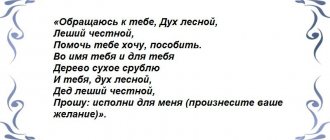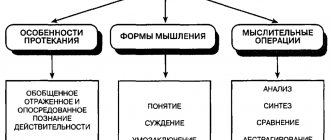How to learn to read faster
People who want to become professionals in their field must work through a huge amount of information. In addition, there are so many interesting books in the world, and I would like to read everything, but I am sorely short of time. There is a way out - learn to read quickly. And this is possible: Napoleon Bonaparte, Honore de Balzac, Albert Einstein, John Kennedy, Maxim Gorky and others read quickly, up to 2 thousand words per minute. For example, Napoleon read one rather voluminous book every morning before breakfast, managing to mark important things in its margins. thoughts for him.
And former American President Theodore Roosevelt, who reads at incredible speed, developed his own method of speed reading, which is now successfully used by those who want to learn it.
It could be argued that reading quickly reduces reading comprehension and retention. But practice shows that the opposite is true: with normal reading, approximately half of the information is absorbed, while with speed reading, 70-80%.
Why does this happen? Because fast reading requires more concentration than normal reading, during which we read less carefully. We have parallel thoughts: we think about current affairs, for example, that it’s time to turn off the refrigerator, about the upcoming vacation, or our thoughts return to past events. It is not surprising that reading progress is slow, and new information is poorly remembered.
You can master speed reading methods at special trainings: 5 lessons of 3.5-4 hours are enough. Their advantage lies not only in the fact that the classes are taught by specialists, but also in the fact that, firstly, the person who paid for the training is unlikely to want to voluntarily skip classes. Secondly, teachers form pairs of students, making classes more effective. Thus, the one who risks missing class will let his partner down - the obligation to him will serve as an additional incentive not to shy away from classes.
You can learn to speed read on your own. To do this, you just need a great desire, faith in the result and daily training. And if many people have the desire, then with faith it will be more difficult. Let's remember how children learn to ride a bicycle: those who think they will fall actually fall; those who are sure that they will go straight away somehow miraculously keep their balance and go. We believe that we can do it!
As for training, we do special exercises every day for 30-40 minutes for 21 days. Psychologists believe that it takes so long to get rid of an old habit and instill a new one.
For exercises, you need to choose a convenient time and place so that nothing distracts you from reading. It is useless to do this, for example, in the subway, where it is impossible to concentrate.
Definition of speed reading
| Speed reading is a skill that helps you quickly structure and assimilate text information. To develop it, a number of special techniques will be useful. The task of speed reading is to optimize the reading process in order to perceive larger units of information, using the brain’s ability to “complete” the missing parts of the picture according to the available data. |
The development of speed reading allows schoolchildren and students to spend less time on homework, preparing for exams, and searching for material for essays and dissertations. The ability to read quickly is also useful for adults, because in many professions they have to deal with a large flow of information.
There are several approaches to the question of how to develop reading speed. Many of them are based on the fact that this speed depends on the order in which information is read, and it can be rearranged. At school, children are taught to read according to a certain pattern: first individual syllables, then words that form sentences, and finally a meaningful test.
Having matured, many continue to use the same algorithm: word - sentence - text. But our brain also has access to a more complex order that will help save time. Let's look at how to master speed reading using specific exercises and techniques.
Receive letters about children's education
Find even more lifehacks for teaching children in the free Skysmart newsletter for parents. Every week, teachers, methodologists and psychologists share expert advice: how to motivate a child to study, help with homework or not, what skills to develop today in order to be successful and happy in the future. Join us!
Rapid serial visual presentation, RSVP
Rapid sequential visual presentation is a method somewhat similar to reading without pauses.
However, it is not the reader himself who is responsible for the absence of pauses between the demonstration of words, but the application. RSVP is a display method where words or groups of words are shown on the screen in “small chunks”. There is a lot of debate surrounding this technology as there are studies both for and against it. RSVP application developers often base their argument on the fact that “only 20% of the time during the reading process is spent comprehending the text, and 80% is spent moving the eye across the page.” Therefore, a technique that allows you to fix your gaze at one point should significantly save the reader’s time.
Here scientists can argue: in reality, our “process of understanding” a text does not stop for a minute (we think about the text when we read it, and when we move our eyes from one group of words to another, and when we pause to “digest” what we read) . So RSVP techniques may indeed save us some time, but they certainly won't increase our reading speed by 80%.
However, there are more convincing arguments in favor of RSVP techniques. For example, studies of the Spritz technique claim that the basis for the success of this technique is not only the sequential display of small portions of words on the screen, but also the correct alignment of words and the selection of the correct speed and rhythm of their output.
Speed and rhythm do play an important role here: as speed increases, Rayner says, our ability to perceive and process what we see decreases. As a result, the reader ceases to understand what he is actually reading about.
In addition, the application does not “know” which words will be familiar to the reader and which ones he sees for the first time (the same “internal dictionary”), so it cannot adapt the speed of information output taking this factor into account. But during “regular reading,” we automatically hold our gaze longer on less familiar words in order to remember them and expand our “vocabulary.”
All this is complicated by the fact that in the case of most applications that work on the RSVP mechanics, it is not so easy for the user to “rewind the text” - as a rule, such an option is possible, but during normal reading, it is, of course, much easier for us to return to what we read .
Verdict
: Rapid Sequential Visual Presentation techniques actually help you read faster, at least by reducing eye movement across the screen. However, as the speed at which words are displayed on the screen increases, the quality of our perception may deteriorate - in fact, the faster words are displayed, the less the reader will remember. Due to the fact that in applications it is impossible to hold your gaze longer on all unfamiliar words and it is difficult to rewind the text, this method is unlikely to be suitable for studying a new, complex discipline.
For the same reasons, it can be difficult to use for reading fiction - a Lifehacker columnist, for example, noted that the RSVP method can help you process a lot of information, but it will not be easy to feel the pleasure of reading with it. Therefore, The Atlantic advises using it to read news items and short articles - that is, texts that do not require a deep dive into the topic. If you do decide to try this method, look towards the applications from these lists: and.
What is considered fast reading: standards and records
For a first-grader, by the end of the school year, a reading speed of 25 to 40 words per minute is considered normal.
By the end of 4th grade, a child should read from 90 to 120 words per minute or more.
In middle and high schools, reading technique is not tested, but it is believed that the average teenager and adult reads about 180 words per minute.
A high indicator can be called a result of 400 sl/min. Speed reading training helps improve average results by 2-3 times or more.
"Some books need a snail's pace"
— Last year, I took a video course on speed reading in a month and a half.
I wanted to get more done, and I also noticed that sometimes I seemed to be reading, but my head was in a different place. I wanted to work on my concentration. Evgenia Makarevich Director of the Rocket SMM Academy
First, there was an introductory block about the components of reading - speed, attention, understanding, and so on. Then we moved on to techniques (Zorro, Tornado, for example). This was the most difficult block because it is recommended to practice each technique on 300 pages. And this requires perseverance and time, but nevertheless I worked, although, to be honest, to a lesser extent. There were three reading speed measurements during the course. This helped evaluate progress.
Photo from the site od.vgorode.ua
I definitely didn't regret it. It helps a lot in professional development and filtering information, you learn to quickly assess whether a new book or article is worth reading. After completing the course, I tried to apply the skill everywhere and always. Reading speed has increased approximately 2 times. As for articles and any professional literature, it’s more likely even 3.
But I believe that it is not always worth using speed reading. For example, I’m currently reading Antifragile by Nassim Taleb. It’s not that speed reading isn’t needed, it’s that you need a snail’s speed to comprehend every word. I also don’t use the skill to its full potential when reading fiction when I’m relaxing and not reading with some purpose. But at the same time, I can read Igor Mann’s new book, for example, in an hour or two, understanding all the most important things, using chips.
Sometimes it seems to me that the skill is not needed. I thought I would read very quickly. But then I realized that this was not for me. I'm not interested in telling everyone on Instagram how I read 300 books in a year. I'd rather read 50, but get the most out of them. On the other hand, besides books, I absorb a lot of other content.
Reading speed standards for grades 1-4 (words per minute)
Interesting fact! According to the Guinness Book of Records for 1990, Howard Berg was declared the fastest reader in the world, who announced a result of 25,000 words per minute. Outwardly, such reading should look like ordinary page turning. But doubts arose about the reliability of this record back in the 1990s, and as a result, Howard was banned from advertising his speed reading courses.
More realistic data was obtained by Ronald Carver, a professor at the University of Missouri in Kansas City, who studied speed reading in the 1980s. For testing, he invited the winners of specialized competitions, editors of magazines and newspapers - in short, people who can quickly work with texts. But in the end it turned out that when understanding the text at least 75%, none of the participants was able to overcome the barrier of 600 words/min. Yes, this result is much above average, but it is very far from the record. This is probably what you should expect when mastering speed reading techniques.
“I still don’t understand how it’s supposed to work.”
— I studied speed reading at an educational center, 1 hour 2 times a week for 3-4 weeks.
It was a small group of about 10 people, the teacher explained the methodology, we read texts and took tests for speed and understanding. Alexander Kruk Cryptoinvestor and trader
I thought that this skill worked like high-speed typing - the same effect, only instead of two fingers you use ten and blindly. It turned out that the result was different. I snatched individual words from a sentence and more or less understood what the text was about.
I increased my reading speed by 2-3 times. But I don’t use technology, I read the old fashioned way. I don't fully understand how this skill is supposed to actually work. They showed me the technique, but they didn’t explain what was supposed to happen in my head. I regret that I never learned to use it.
What prevents us from reading quickly?
To understand how to read quickly, you need to understand how this process generally occurs. What do we do while reading? We follow the text with our eyes, but not linearly, but in leaps and bounds - we fixate on one group of words, then move on to the next, and sometimes we stop to comprehend or move back. These movements (called saccades) take only a few fractions of a second, but they occur continuously, so they generally slow down reading.
One of the speed reading techniques is based on eliminating these “jumps”. Experts advise to continuously monitor where your gaze is directed and train the skill of linear movement - word by word, without running forward or going back.
For a child, this approach will initially reduce the reading speed even more, but gradually a habit will be developed and he will be able to look at two or three words at once. This method will not make him a record holder, but it will help him read faster and remember information better.
In addition to the habit of jumping through the text, there are several other factors that affect reading speed:
- Limited field of view - our eyes are designed to accommodate only 5-30° of central vision. Everything else is perceived by peripheral vision, which is much less developed. Everything that does not fall into the visible area is simply “completed” by the brain according to the available data. Therefore, you cannot read the entire page in a matter of seconds, but you can learn to understand the meaning of the text from individual phrases.
- Subvocalization or pronouncing words - even when reading silently, a child can mentally pronounce the text, since he lacks the skill to perceive words as visual images and instantly grasp their essence. To get rid of subvocalization, you can simply read more, but speed reading lessons will still be more effective.
- Problems with concentration - low reading speed in younger schoolchildren may be associated with a poorly developed ability to focus on a task. This happens when a child is often distracted, “has his head in the clouds” or cannot sit still. This can be either a sign of ADHD (attention deficit disorder), or the consequences of stress, poor sleep, or lack of discipline. The skill of concentration can also be developed.
Reading without stopping
Another speed reading strategy involves reading without stopping.
In order to understand how it differs from regular reading, you will have to remember what we talked about in the first part: our “standard” reading is a discrete process. We fixate on a certain group of words, then with a jerky movement we move our gaze to another group, and so on. After several jumps (or saccades), we take a short pause (during which the brain gets an additional opportunity to process what we read). These regular pauses take between a quarter and half a second - and speed reading without stopping is aimed at suppressing them. However, not everything is so simple: in this way you not only save time, but also do not give yourself the opportunity to better understand and remember what you read. Moreover, it is not so easy to completely suppress the desire to “give yourself a break” - most likely, you will still have such pauses (albeit less often), but the quality of your reading comprehension will still deteriorate.
Verdict
: physically such a reading is quite possible. The only problem is the quality of perception of the text. Some readers of our first part differentiated between “reading with retelling” and “reading without retelling” and it is no coincidence that in order to retell a text read, it is important not to just skim over the lines “in one breath.”
Speed reading methods and techniques
We looked at the main factors that interfere with reading. They will also be a hint to the question of how to increase reading speed without significant losses in understanding the text. Reading a page quickly but mechanically is a completely pointless exercise, and most speed reading methods are aimed at ensuring that a child or adult retains 50-75% understanding of the material.
Suppression of subvocalization
If a child has acquired the habit of mentally speaking a text, he will read to himself at the same speed as he reads out loud. One of the effective ways to get rid of such pronunciation is Zhinkin’s rhythm. This is a short rhythmic composition that was created by psychologist N. Zhinkin during research into inner speech.
The peculiarity of the rhythm is that it does not coincide with the melody of the Russian language, which has variable stress. Tapping it with your hand creates a zone of inductive inhibition around Broca's area, the area of the brain responsible for motor speech.
This, figuratively speaking, turns off the speech motor channel and makes it impossible to mentally pronounce the text. The brain learns sensory perception - processing information received in the form of a visual image, without pronunciation.
This speed reading technique is suitable for children and adults. It is not necessary to know musical notation, you can simply do it, and the child will easily master it in a few minutes. But don't worry: your child won't have to tap his finger or pencil on the table all the time. About 20 hours of practice is enough for the brain to restructure itself and subsequently perceive the text without pronunciation.
Development of peripheral vision
The field of central vision is very limited, and this makes it difficult to perceive the entire page of text, or even one line. However, you can combat this by training your peripheral vision. To expand the “visible zone” of the text, wedge-shaped tables are used. This is another speed reading technique that is useful for children and adults.
How to work with the table : Have your child read the side numbers while looking only at the center column. You need to move along the table from top to bottom, keeping your gaze in the center and trying not to move your eyes to the right and left.
Speed reading simulators for children can be aimed at expanding the field of vision not only horizontally, but also vertically. In order to increase the viewing angle from above and below, you need to move your eyes along the following table and at the same time keep your gaze on the central line.
If there are no difficulties with numbers, move on to syllables. It will be more difficult for a child to perceive two symbols on each side at the same time. But since the syllables form words, the brain’s ability to “complete” the missing information will come into play.
Why is this necessary : the habit of using only central vision leads to the fact that the child reads the text one word at a time. For example, in order to understand the meaning of the sentence “The grass is greener in spring,” he must first imagine spring, then read about grass, and then recall the color green.
As a result, in order to perceive the text, three visual images must successively replace each other and be combined into one. If the child can see the entire sentence, an image of green spring grass will immediately appear in his head, which will significantly speed up the process.
PhotoReading Technique
This method of reading received such a name because the reader seems to “photograph” the page with his gaze, trying to grasp the essence of the material. It is suitable for situations when you need to look through a large number of texts on a familiar topic in search of the necessary information. Documents and scientific literature on unfamiliar topics should not be read this way - there is a high risk of missing something important.
How to use PhotoReading:
- study the structure of the text - look at the table of contents and subheadings, creating a general idea of the material;
- On each page, look at small text arrays, blocks, lists, highlighting key phrases;
- Having gone through the material to the end and presented its essence, return to important places to read them more carefully.
In most books and articles, the proportion of important phrases is up to 20%. By focusing your attention on them, you can not only develop speed reading skills, but also learn how to structure information.
Diagonal reading technique
This method is often used by those who independently understand how to learn speed reading. It is believed that Theodore Roosevelt, Vladimir Lenin, and John Kennedy read a huge amount of literature with its help. Diagonal reading is essentially similar to photographic reading, but using peripheral vision.
How to read "diagonally":
- draw a mental line from the top left corner of the page to the bottom right;
- move your gaze along this diagonal, trying to take in as many words as possible at the same time;
- do not read into individual words, create a holistic image of the material;
- highlight key phrases and skip phrases without meaning;
- Do not return to individual pieces of text until you have read the material in its entirety.
This reading technique, like the previous one, is mainly suitable for texts on a familiar topic. At the same time, it is poorly applicable for children, because a child is unlikely to be able to grasp the essence of the material from individual phrases.
Reading "diagonally"
Under this collective name, several speed reading techniques can be combined: firstly, reading “zigzags” (zigzag movements of the gaze along the page), and secondly, “covering” the entire page, “at one glance.”
According to speed readers who practice these techniques, this approach allows them to read using their peripheral vision. What scientists say: reading this way is hardly possible. The whole problem is in that very peripheral vision. Scientists prove that peripheral vision (with all its advantages) does not allow us to adequately perceive and recognize text - in such conditions we simply cannot read it.
We can only read text that falls within the area of our foveal vision (central 1.5–2° visual field): for comparison, our thumb falls approximately into this area if we extend our arm in front of us. Therefore, the human eye cannot read a paragraph or even an entire page - you simply will not see the text.
When “reading diagonally,” our gaze picks out individual words or phrases, which does not allow us to read fully. However, using this approach, we can, for example, get some idea of the material if we have already read it at some point and the text has not been changed since then
.
Verdict
: physiologically this type of reading is impossible.
You can read slightly faster than 500 words per minute, but you are limited by the capabilities of your eyes and the anatomy of your retina.
To understand text, you need to move your eyes so that your foveal vision is in the area [of the page] you want to focus on. Outside this area, visual acuity is noticeably lower - you cannot distinguish words and text far beyond the central field of vision. This is a factor that limits the speed of reading and information processing by the brain - Keith Rayner, one of the most famous reading researchers (worked at the University of Massachusetts at Amherst), book “Eye Movements and Information Processing in Reading”
At what age can you practice speed reading?
Speed reading lessons will only be useful if the child, in principle, can read well. Therefore, experts do not advise starting immediately from the first grade, when it is important to master a leisurely and thoughtful understanding of the text. At this time, it is better not to pay attention to speed at all, allowing the child to move at his own pace.
Most exercises for developing speed reading are intended for children 9-10 years old. Some teachers even believe that they can interest a child only in adolescence, when he understands the meaning of such activities.
But this does not mean that any techniques should be postponed until the age of 9. With preschoolers and first-graders, you can develop attention, do exercises to expand the field of vision, and visualize what you read. The ability to concentrate and imaginative thinking will help the child quickly learn new things when it comes time for special speed reading exercises.
“After a while the speed returned to normal”
— I took the course more than 10 years ago.
The duration of the course was 3 months, 168 academic hours of classroom training, as well as daily independent study at home for 1-2 hours. Evgeniy Danilik Founder of the Museum of Architectural Miniatures “Mini Country”
The most difficult exercise was the evening exercise - looking at the dot in the center of the page and then immediately falling asleep. Moreover, lights out no later than 23:00, which was doubly difficult for me, a night owl.
I completed my training in a disciplined manner, but unfortunately, there is no magic pill, after which you begin to read and absorb information many times faster. Everyone in the group had different results. After a while, everything returned to normal, the reading speed dropped, and the only profit left was a wider angle of peripheral vision.
Key Skills for High Reading Speed
Some skills can and should be trained at any age - they will be useful for both children and adults:
- ability to focus attention and not be distracted;
- wide field of view, developed peripheral vision;
- the ability to structure information and highlight the main thing;
- large amount of RAM;
- high speed of thinking.
Classes to develop these qualities can be carried out both in parallel with learning speed reading, and separately. At a younger age, they will prepare the child for school, and will help schoolchildren and adults process text material faster and better assimilate what they read.
In addition, almost all of these skills are closely related to each other and by developing one of them, you can improve others. For example, when we learn to structure information, at the same time we remember it - this is how memory becomes better and the speed of thinking increases.
Goals and objectives of the course
This course is designed to master the skill of fast reading, which is necessary to increase the efficiency of studying Internet resources, information articles, newspapers, magazines, fiction and popular science literature, textbooks, etc.
However, speed reading has some other benefits, and our course will allow you to take full advantage of them. Along with actually increasing your reading speed, our course will help you :
| 1 | Remember more. We do not guarantee that you will be able to remember any book from cover to cover. But we promise that with proper training, you will learn to remember everything that seems important as you become familiar with the information. In addition, you will easily filter out the unnecessary and quickly highlight the most important. |
| 2 | Better concentrate. Not a single task will be done properly, not a single book will be useful if your thoughts are occupied with something extraneous. As you master speed reading techniques, you will also work on your ability to focus on a specific task. This will be useful in any field later. |
| 3 | To save time. Today's life does not give concessions to anyone, and sometimes there is not enough time not only to read, but even to relax. If you learn to process information faster, you will be able to free up the lion's share of time, which you can devote to yourself, your favorite activities, loved ones and family. |
| 4 | Gain a career advantage. By being able to read more efficiently, you will be able to master professional literature faster, remember more data useful for work, and retrieve it from your memory at the right time. With these skills, you automatically stand head and shoulders above your competitors. |
| 5 | Increase your level of erudition . The more a person reads, the more he knows and the more interesting he is as a person - this is erudition. You will be able to more easily find a common language with others, maintain any conversations, earn the reputation of an excellent interlocutor, which will attract more interesting people and acquaintances into your life. |
These are just the most obvious benefits of speed reading, and as you complete the course and apply the knowledge in practice, you will notice other bonuses of mastering such a valuable skill. And now let's talk in more detail about what speed reading is and who and where it can be useful.
Speed reading exercises: warm-up
You can help your child learn to read quickly not only through special courses, but also for free - we will share a set of simple exercises for speed reading. Let's start with a warm-up, which will expand your peripheral vision and prepare your eyes for the load.
Pavel Palagin in his book “Speed Reading in Practice” recommends the following exercise:
- take a book of standard A5 size and start moving your gaze along the lines, like a spotlight;
- move your gaze first from left to right (as usual), and then vice versa - from right to left;
- relax your eyes and don’t think about the meaning of the text, just try to distinguish the letters;
- During the 1st minute, look at one line, for the 2nd minute, look at two lines at the same time, at the 3rd minute - at three lines, then - at five lines.
After such a warm-up, you can try not just to distinguish letters, but to quickly read the text one line at a time.
How to take the course?
The course involves daily exercise at home or at work for 20-40 minutes (you can do it less often, but then the effect will be less). With this training regimen, you will get results in just a couple of weeks, and if you study for 2-3 months, you will be able to significantly increase the speed and quality of reading.
The course, as you already know, consists of five stages, each of which involves mastering certain skills that help you read quickly. To master each skill, it is important to practice more - read books, newspaper articles, magazines, textbooks, devoting at least 30 additional minutes a day to this.
First, watch all the lessons and try the exercises. If you learn a skill quickly, don’t spend too long on this lesson. For example, many people have no problems paying attention when reading and are able to skip straight to Lesson 2. Spend more time on the lessons and exercises that you find helpful or that you find challenging.
It is not necessary to go through the exercises in the sequence indicated in the lessons, the main thing is to achieve the goal for each part. And most importantly, having mastered each skill separately, learn to use them in combination to form a stable habit of reading not only quickly, but also correctly.
And before taking the course, we suggest you check how quickly you read at the moment:
Statistics Full screen
Remember your result to compare it with the result after completing the course, and start studying.
Speed reading exercises that are useful at any age
A significant part of the popular methods for speed reading are suitable for adults and teenagers with equal success; below we offer just such materials.
Name the color
The technique helps develop the ability to perceive a word as a holistic image, and not as a set of specific letters.
What to do: name the color rather than read what is written.
Reading backwards
Take any text and try to read it backwards - from right to left. Monitor how often you are distracted and how much you manage to concentrate. This simple exercise is aimed at concentration, which will be useful for both adults and children if they have already learned to read fluently.
You can change the operating principle. For example, alternately read words backwards, letter by letter, and in whole. The main thing is not to be distracted by extraneous stimuli and monitor how the speed and perception of what you read changes.
Schulte tables
The technique of the German psychiatrist Walter Schulte is used to develop peripheral vision, attentiveness, and it also helps improve working memory. Based on it, many online speed reading trainers have been developed that automatically record the time it takes to complete the table and mix numbers and letters for a new test.
What to do: ask your child to look only at the center of the table, as if taking it all in with his gaze, and look for numbers in ascending order or letters in alphabetical order.
In addition to black and white cards, there are also options in other colors - for example, red and black Gorbov-Schulte tables, which are often used in speed reading schools for adults and children. The principle of working with them is similar: do not look for numbers by looking through them with your eyes, but try to see the table as a whole, noticing the desired cell with your peripheral vision.
Notes in the margins
The essence of this technique is to read books, magazines and other materials with a pencil, highlighting the main idea of each text and leaving notes in the margins. This technique may seem slower at first glance, but in practice it is one of the most useful reading exercises. The habit of leaving notes helps you learn to structure text and quickly understand its meaning in a few lines.
This method of reading was used by many famous figures. For example, Voltaire's notes in the margins of the books he read were even published in a separate edition. Of course, such a task will be too difficult for a child, but this habit will definitely come in handy for adults.
How to read slowly
General advice: before you start reading, turn off your mobile phone and other devices. Or don't turn them off, but put them on silent and put them away. The fact is that social media alerts stimulate the release of dopamine in our brains, which prevents us from enjoying activities that require attention, including leisurely reading well-written text.
Tip 1. Re-read
At the beginning of the 19th century, the German philosopher and theologian Friedrich Schleiermacher introduced the concept of “hermeneutic circle” into scientific use.
When we first read, we do not notice many details because we are not yet fully familiar with the work. When we read the text again, we have already formed a general impression of it, and we begin to notice details that did not tell us anything the first time. As a result, our understanding of the meaning of the text becomes larger and more accurate. Therefore, rereading is a necessary stage of slow reading, which also brings special pleasure.
In the preface to his lectures on European literature, Vladimir Nabokov said: “It may seem strange, but a book cannot be read at all - it can only be re-read. A good reader, a selective reader, a participant and a creator, is a re-reader.”
Tip 2: Focus on a Single Piece
It is impossible to read a large work slowly - fortunately, this is not necessary. You need to practice your ability to read the text in small fragments.
Soviet philologist Dmitry Sergeevich Likhachev recalled his studies at the university: “Academician Shcherba was a promoter of slow reading. Over the course of a year, he and I only managed to read a few lines from “The Bronze Horseman.” Each word seemed to us like an island that we had to discover and describe from all sides.”
A separate paragraph or line should become the same island on which all attention is concentrated.
In a limited area of the text, the significance of each element increases; words or punctuation marks take on extra weight.
That is why it sometimes seems to us that a short poem contains more meaning than some thick novel. The Russian formalist Yuri Nikolaevich Tynyanov associated this effect with the so-called closeness of the verse series - the close proximity of words with increased meaning to each other, forcing us to move deeper.
Tip 3: Find Key Places
The most “impactful” places in any work are its title, beginning and end. If everything is obvious with the title, then with the beginning and end - not so much. Try to compare the beginning and ending of the book you are reading. For example, Gogol’s “The Inspector General” begins with the Governor informing his subordinates of “unpleasant news” and one of them, Luka Lukich, exclaims: “Lord God!” - and ends with the Mayor finding himself “in the middle in the form of a pillar, with outstretched arms and his head thrown back.” (Remember that Christ was crucified for the good news of the coming of the Kingdom of God.)
In the narrative, you also need to pay attention to the first and last appearance of the hero, to the description of his appearance, manners, clothes, room. Memories and dreams are no less significant - why did the author place them here? If a motif appears several times in a work, stop and think about what it might mean, remember where you first encountered it. Some writers have marker words: in Dostoevsky, for example, these are phrases like “I don’t know why he said that,” followed by key monologues of the characters.
However, the most important passages in any work are those that arouse your personal interest. When you come across something incomprehensible, take your time, don’t rush forward - try to understand what exactly puzzled you and why.
Your real understanding of the text begins with your question.
Tip 4. Feel the style
Each author has his own voice: someone, like the aristocratic Turgenev, writes quietly and delicately, trying not to get into the characters’ souls, someone, like Gogol, who loved to read his works to friends, adds absurd and sonorous words, someone like Dostoevsky, hastily dictating the text to his stenographer wife, writes tortuously and unevenly. The way the author constructs sentences, what metaphors he resorts to and for what purpose he uses them reflects his view of the world. Chasing the plot, devouring five books a week, means not seeing a person with an individual manner and temperament behind the printed letters.
It’s bad when in a hurry we don’t hear the author’s voice, but it’s even worse when we don’t notice that there are more than one or two such voices in a book. “A novel,” wrote the 20th-century Russian culturologist Mikhail Bakhtin, “is a multi-styled, contradictory, multivocal phenomenon,” and not every written word necessarily belongs to the author.
Tip 5: Be suspicious
Everyone read Chekhov's story "The Man in a Case" at school. His hero, the Greek language teacher Belikov, “was remarkable in that he always, even in good weather, went out in galoshes and with an umbrella, and certainly in a warm coat with cotton wool.” We laughed at this man together, condemned him for his “aversion to the present,” and praised Chekhov for creating such an absurd and pathetic type. But wait, did Chekhov tell us this story? Let's go back to the beginning.
“At the very edge of the village of Mironositsky, in the barn of the elder Prokofy, the belated hunters settled down for the night. There were only two of them: the veterinarian Ivan Ivanovich and the Burkin gymnasium teacher.”
The story of the “case man” is told to us (or rather, to the veterinarian) by a provincial high school teacher named Burkin. Apparently, Burkin is a classic representative of the 19th century intelligentsia, fascinated by tendentious “democratic” literature that looked for “types” and denounced people for “inaction.”
“Under the influence of people like Belikov,” says Burkin, “over the last ten to fifteen years, people in our city have become afraid of everything. They are afraid to speak loudly, send letters, make new acquaintances, read books, are afraid to help the poor, teach them to read and write...”
Who is Chekhov really laughing at here - the Greek teacher (whom we know only from Burkin's words) or his colleague - a “thinking, decent” man of his time? And which of them is really “in the case”? It is useful to ask such questions as often as possible. Are you sure that Humbert Humbert, the pedophile from Lolita, is being completely honest with you? Do you remember who exactly explained Oblomov’s whole life to his literary friend? Could the narrator from “Poor Liza” have messed up or embellished something in the thirty years that have passed since the story described in the story? How did Belkin in “The Station Agent” spy the scene between Minsky, Dunya and Vyrin in the former’s house? Is the author leading readers by the nose?
Tip 6. Look in the dictionary
Train yourself to check the meanings of all unfamiliar words, especially adjectives: over time, they will significantly enrich your speech. Refer to the dictionary even when a word seems familiar to you, but you are unable to give an exact definition. Take the time to look up the origins of words that seem significant to you in the text. To do this, you can use the Vasmer dictionary or other etymological dictionaries.
The ancient Greek language provides especially rich ground for thought. Russian writers, in particular, loved to resort to it. Thus, the surname “Stavrogin” was formed by Dostoevsky from the ancient Greek word σταυρός (“cross”). According to Tolstoy's original plan, Karenin should have had the surname Stavrovich, but the writer changed his mind. His son Sergei Lvovich recalled it this way: “Once he told me: “Carenon - Homer has a head. From this word I got the name Karenin.”
Another simple way is to use a search engine.
In Dostoevsky’s “Notes from Underground” there is the following fragment: “They tell me that the climate in St. Petersburg is becoming harmful to me and that with my insignificant means it is very expensive to live in St. Petersburg. I know all this, I know it better than all these experienced and wise advisers and nods. But I remain in St. Petersburg; I won’t leave St. Petersburg!”
Usually, under the word “nodder” there is a note with reference to Dahl: “This word, obviously, was formed by Dostoevsky from the colloquial “nodder”; this was the name of a person who nods his head, winks, or gives secret signs to someone.”
Does this interpretation clarify the meaning of the fragment? Not good. However, you can find out on the Internet that the word “nodding” is a reference to the Gospels of Matthew and Mark, to those scenes in which Jesus was persuaded to come down from the cross: “And those who passed by blasphemed him, shaking his heads and saying: Destroy the church and three day creator: save yourself, and come down from the cross” (Mark 15:29–30). It turns out that Dostoevsky’s text refers the reader to the Bible: the “underground man” compares himself to Jesus Christ.
Tip 7. Leave notes, draw diagrams and plans
Notes in the margins of a book or in a separate notebook teach us not only a critical, active approach to the text, but also the ability to accurately and concisely formulate our thoughts. Intuitions and guesses that are not recorded on paper or electronic media will remain vague impressions and disappear into oblivion.
The habit of reading with a pencil, pen or marker in our hands turns us momentarily into a creator, an equal participant in the dialogue with the author, a real reader.
Until then, we are ordinary listeners or guests.
Creating plans and diagrams can provide no less service. In his lectures on Anna Karenina, Vladimir Nabokov, using graphs and comparisons, showed that the line of Anna and Vronsky chronologically takes the lead; while reading Dickens or Proust, he drew plans of London or Paris in the margins. Lev Semenovich Vygotsky, drawing the composition of Bunin’s story “Easy Breathing,” explained how art interacts with consciousness. Every reader can do this.
Let's take a scene from the eighth chapter of "Fathers and Sons", in which Pavel Petrovich examines the room of Fenichka, a girl who recently gave birth to a child from his brother Nikolai Petrovich:
“There were chairs with lyre-shaped backs along the walls; they were bought by the deceased general in Poland during the campaign; in one corner stood a crib under a muslin canopy, next to a forged chest with a round lid. In the opposite corner a lamp was burning in front of a large dark image of St. Nicholas the Wonderworker; a tiny porcelain egg on a red ribbon hung on the saint's chest, attached to the radiance; on the windows, jars of last year's jam, carefully tied, showed a green light; On their paper lids, Fenechka herself wrote in large letters: “laceberry” <…> In the wall, above a small chest of drawers, hung rather bad photographic portraits of Nikolai Petrovich in different positions, made by a visiting artist.”
Just skimming the text with our eyes, we are unlikely to notice that there is something missing in the description of the room. If you sketch out the plan of the room, it will become clear that Pavel Petrovich does not mention Fenechka’s bed, although there is definitely a place for it in the room. Could this bed be located in another room? No: the child sleeps here. Can Pavel Petrovich be accused of inattention? Hardly. Pavel Petrovich deliberately
does not look at the bed on which his brother recently conceived a child with Fenechka. With the same Fenechka, because of whom Pavel Petrovich will soon fight with Bazarov. This trick is called translation from one sign system to another - from verbal to graphic. How much more information about the Kirsanov family can be gleaned from this fragment?
Tip 8. Read the text itself first, and only then the criticism.
A good critical article is always the result of a slow, thoughtful reading of the text. It helps us expand our own understanding of the book. Journal criticism will evaluate its quality and reveal its relevance, philological criticism will show how the text is structured and what influences its author experienced, a scientific monograph will offer a new interpretation and explain its significance for culture. Criticism of classical works written “hot on the heels” of a book’s publication is especially valuable: it is useful to see how differently contemporaries perceived a text that seems canonical to us.
However, the 20th-century Russian philosopher Vladimir Bibikhin, in his courses on reading philosophy, warned students against becoming “captured” by someone else’s concept. Any thought must first of all be allowed to be itself, without “placing” it in a certain era, direction or style. This also applies to fiction: before reading criticism, read the work yourself.
Online trainers for speed reading
Online speed reading exercises, which are easy to find on the Internet, will help you learn to quickly “swallow” texts without losing their meaning. Some of them are universal, while others allow you to train at different difficulty levels and track your progress. They are convenient because they provide an opportunity for an adult or child to hone their skills in a variety of situations: on the road, at school during breaks, or in line to see a doctor.
We are sharing a selection of sites with free online speed reading trainers for children and adults:
- readster.club - a convenient resource where it is convenient to monitor your reading speed, change it and track progress on a graph;
- chtenie.net - a simulator with 18 difficulty levels and 5 speeds;
- skorochtenie.online - online test of reading speed and text comprehension;
- booksite.ru is another online test that only tests reading speed;
- cepia.ru - training according to the Schulte and Gorbov-Schulte tables and other simulators.
Is reading at all useful?
Admit it, have you read all the books on the reading list that you were given for the summer at school? The first thought, when you receive this list, impressive in its volume, is how you can even manage to read it in just three months, and the second - why now, because you still have your whole life ahead of you?
Of course, here we are talking about intellectual development and enlightenment. Scientists have proven that the earlier a child learns to read, the higher his mental abilities will be in the future. Researchers at the University of Edinburgh and King's College London conducted an experiment: they observed the development of identical twins aged 7, 9, 10, 12 and 16 years old, who grew up in the same conditions.
It turned out that twins who read from early childhood had better results on intelligence tests than their identical brothers. Simply put, reading directly affects a child’s vocabulary, outlook and other mental abilities.
Here's what Steward Ritchie, lead author of the study, says about this: “Reading helps teach children abstract thinking because... They imagine other people, objects, and places as they read. This skill is useful in solving other problems, such as taking an IQ test. In addition, to learn to read better, you need to practice a lot and concentrate on the task, which also develops intelligence” [D. McNamee, 2014].
Another experiment was conducted with several types of people: with adults who loved to read since childhood; with those who started reading later than the previous ones, and with a group of people who cannot read at all. MRI scans of the subjects' brains showed that those who read from an early age had a more developed occipital lobe than others, meaning they were better able to analyze visual information than others.
This feature promotes the development of creative qualities, helps to plan and make decisions more consciously. Also, this group of people had more developed parietal lobes of the brain, i.e. they write better and perceive the information they read [M. Szwed, P. Ventura, L. Querido, L. Cohen, S. Dehaene, 2011].
Another study was conducted by scientists from the University of Liverpool. Their objects of study were students of literary departments. By measuring their cognitive activity, it was found that those who were more well-read and able to analyze tests had increased brain activity [N. O'Sullivan, P. Davis, J. Billington, V. Gonzalez-Diaz, R. Corcoran, 2015].
Stanislas Dehaene, a French neuroscientist, observed how children's brains reacted while they read (they read while in an MRI machine). As a result, it was noticed that even one word read triggers brain activity. First, the brain perceives letters as a picture or an object, and then it uses visual code with knowledge about letters. It turns out that a person first sees the letters, and then perceives their meaning.
Initially, the human brain was not “tuned” to reading; this was not given by nature. During the reading process, a signal passes through the primary visual cortex along the fusiform gyrus, which is responsible for recognizing faces. This same area of the brain is responsible for storing knowledge about languages [S. Dehaene, F. Pegado, L. Braga, P. Ventura, 2010].
Emory University scientists have found that when a person reads, activity in the central sulcus of the brain increases. In this department, neurons transform real sensations and thoughts. Simply put, the reader experiences empathy for the hero of the book or the event he read about at the level of neural changes, and these feelings can last for several days in a row. This is evidenced by the MRI results of the experiment participants [Emory University, 2013].
Now let's summarize: reading enriches vocabulary, develops speech, broadens horizons, improves memory and concentration, develops imagination and “trains” the senses. Speed reading is especially useful for children: the earlier a child learns to read, the more developed his verbal and nonverbal intelligence will be. All these facts are proven by numerous scientific studies.
Reading for the brain is like strength training for the muscles: regular, proper physical activity strengthens the muscles, and the same thing happens with the human brain. What will happen if you intensify your training, make it more frequent and of higher quality? That's right - the muscles will begin to grow even faster. Speed reading has the same effect on the development of intelligence, because it allows you to obtain many times more information than at the usual pace of reading a book, and at the same time activates the work of many areas of the brain.
Texts for speed reading
The skill of not reading individual words letter by letter, but perceiving them holistically, is well developed in special texts for quick reading. All of them are distinguished by their non-standard presentation of material and force our brain to deviate from its usual patterns, forming new neural connections.
Texts for speed reading are:
- with missing letters;
- rotated 90 or 180 degrees;
- with torn and shifted stitches
- with stripes, grilles or other “noise interference”;
For children, speed reading with the help of such texts turns into a game. It’s easy to get a child involved by organizing a competition with rewards or training against the clock. You can prepare some of the materials yourself - for example, cut out a “lattice” from paper of the appropriate size and place it on the pages of ordinary books.
Here are a couple of useful resources:
- universal texts for training speed reading;
- children's texts to test reading speed.
Don't Make These Mistakes
Often, even capable children show poor readiness for reading due to methodological errors at the initial stage of learning syllabification. Self-study at home has an impact. Parents commit the following typical violations:
Tell the baby a letter, not a sound
For example, “Pe”, “Ne” and so on. This is not true. The names of letters from the alphabet must be pronounced without an additional sound: “K”, “M”...
Memorizing letters with overtones will lead to problems with reading. The child puts the syllables together like this: “pea-pea” instead of “pa-pa.” Short and clear sound pronunciation is the main rule and condition for a fast reading pace.
Compose syllables from individual letters
Assignment: look, “b” and “o”, it turns out “bo” - methodologically incorrect. Teach children to immediately extend the vowel, without a pause between sounds: “bo-o-o-o.” Avoid spelling words. This is easier for children, but it takes time to analyze words into their component parts, and the meaning of phrases is lost.
They read texts for a long time
Conduct classes often, spend 5-7 minutes on one thing. It is better to read a short passage from the text, a couple of sentences at a good speed, than to keep a student at the table for half an hour and force him to study. Short lessons are more effective. Don't forget to take breaks between exercises, about 2-3 hours.
Important! Consider the child’s mental characteristics: memory capacity, maximum attention span.
If a teenager can concentrate and study for 15-20 minutes, it is not tiring, increase the duration of the lesson, but reduce the number of lessons per day to one or two.
Exercises for children
In this section, we have selected the TOP 5 exercises to increase reading speed in children. Unlike viewing text diagonally and other “adult” techniques, they are suitable even for a child who has just learned to read. In this case, our goal is to increase not so much speed as reading productivity and the ability to focus on a task.
Popular exercises:
1. "Follow the Line"
While reading, the child should move his finger or pencil along each line, tracking his gaze. This helps eliminate eye movements and avoid jumping from line to line and backtracking.
2. "Walk through the maze"
Children love solving puzzles in which they need to find a way out of a confusing maze. Invite your child to go through another such labyrinth, tracking the path only with his eyes - without using his hands. This exercise trains the ability not to be distracted from a task by concentrating on it for a long time.
3. Harvesting technique
This speed reading technique for children was proposed by Pavel Palagin. It helps to assimilate the material read and transfer it from RAM to long-term memory. The essence of the technique: after reading each semantic block, the child must pause, turn away from the text and imagine it in the form of images or diagrams. After that, he briefly talks about what he read in 1-2 sentences and continues further.
4. "Naughty Book"
In this exercise you need to read texts that are located on different sides of the reader. You can explain to the child that books are also sometimes naughty and do not want to lie still. Similar techniques are often used in teaching speed reading online, but they are also convenient for home use.
5. "Find the Word"
This is one of the simplest exercises for attentiveness and the ability to extract the necessary information from the text. The child needs to be offered a game: find a certain word on the page of the book and count how many times it is mentioned.
So, in short:
Reading diagonally
and trying to take in the entire page with your eyes hardly have anything in common with real reading. Most of the text in this case falls into the peripheral vision zone and simply cannot be read. These techniques do not allow you to read text, but they can be used to quickly skim through material you already know.
Reading without stopping
- also not the best way to save time. This approach significantly reduces our ability to perceive material. As a result, you will be able to quickly read the text, but remembering and retelling its content will be extremely difficult.
Suppression of subvocalization
- another poorly working technique. Research shows that the reader always pronounces the text to himself, even if he is sure of the opposite. Moreover, subvocalization helps us understand what we read better. Instead of suppressing it, it is worth expanding your vocabulary - it takes us less time to internally pronounce familiar words, and this skill is not related to the ability to quickly read aloud.
RSVP
– this technique works, but with limitations. You will be able to read faster, but you are unlikely to increase your reading speed many times over. In addition, the features of this technique make it difficult to use in cases where you need to read complex material (for example, an article from a scientific journal on a topic that is new to the reader). Reading for pleasure in this format is also inconvenient. The ideal option is mail, news notes and articles like this one.
In the third [and final] part, we will talk about cases when you still cannot do without speed reading, what “slow” reading is, and how to save time on reading “serious” scientific literature - without resorting to complex techniques.
PS Other materials from ITMO University:
- How tech entrepreneurship and science fiction relate
- Postgraduate studies at ITMO University: the main thing about admission and study in 2021
- Polymer holograms with “escaping” nanoparticles were developed by university scientists
- EMI life hacks: how to teach in English if you are not a native speaker
What's behind the impressive results of speed readers?
Unfortunately, the outstanding results of many speed readers (with the exception of Kim Peak) are due to their ego, and not to their real capabilities.
The same Carver notes that Kennedy’s achievements in reality could have been more modest - most likely, he could read at a speed of 500-600 words per minute, and skim the text at a speed of about 1000 words per minute (although this is still two times faster than “normal” reading). How then did the figure of 1200 words per minute come about? Kennedy biographer Richard Reeves believes that it was actually “pulled out of thin air,” as one of the Time magazine reporters who worked in the White House suggested. The reporter contacted the Evelyn Wood School, where Kennedy studied speed reading, but did not receive the results of his final test - it was not administered because Kennedy did not complete the course.
As for other outstanding results, the 1963 study (the case of a speed reader reading 17,040 words per minute) is anecdotal. At that time, specialized tests were not used to record achievements, and the results were based on the test taker's self-assessment - which is unlikely to be accurate.
The same applies to the achievements of Howard Berg. According to Mark Pennington, a reading expert, “The Guinness Book of World Records at that time was not known for cross-checking the records they published, and this record was not recorded by them personally. They took Berg at his word, and he probably just made up his own record.”
By the way, in 1998, Berg was prosecuted by the US Federal Trade Commission for “false” and “misleading” marketing practices related to the sale of his reading speed products. As a result, Berg was prohibited from advertising his product as "a system that allows anyone - a child, an adult, a person with a disability - to learn to read at a speed of 800 words per minute or higher."
Summary
Speed reading is a superpower that absolutely anyone can master. This skill will be useful to everyone: those who read slowly, pronouncing each word to themselves syllable by syllable; for those who need to learn as much information as possible in a short period of time. Speed reading develops intelligence, trains memory, concentration, attention, perseverance, and teaches you to work with a large amount of information.
Of course, there are unique cases when the speed reading technique is mastered intuitively, but this is rather the exception to the rule. To learn to read quickly, you need to constantly practice and be prepared for the fact that the result will not come immediately. We know that it is impossible to pump up your abs with one visit to the gym. It’s the same with mastering speed reading: only understanding the goal, why you need it, and regular training will help you achieve the desired result. As you can see, there is no magic. Your magic wand is a personal desire and diligence, and it is in your hands.
We wish you good luck and ask you to share your opinion with us:
We also recommend reading:
- Storytelling
- Read quickly and even faster
- Review of our course on “Fast Reading” from LazyLady
- Rules for Effective Reading
- How to learn to read quickly
- Read faster, remember better
- Speed reading school: speed exercises
- Some Scientific Research on Superintelligence
- The Complete Guide to Reading: How to Do It Profitably
- Why do you need to learn speed reading?
- How to master speed reading in a week
Key words:1Speed reading
Reminder about visual gymnastics
Of course, we must not forget about the schoolchild’s eye health!
Reading is very straining on the eyes, so I would like to advise you on visual gymnastics exercises.
1) At the beginning of the warm-up, you need to close your eyes and briefly, without pressure, massage your eyelids with your fingers.
2) Bring your eyes to the center (look at your nose), and then up (to the ceiling), repeat alternating actions.
3) Then roll your eyes in the directions indicated in the image, lowering/raising your eyelids.
4) Then the child should look at some close and distant objects, alternating actions.
5) At the end of the warm-up, you should massage your eyes in the same way as you did at the beginning.
Bonus
It is impossible to ignore such a book as “Speed Reading for Children 6-9 Years Old.
How to teach a child to read quickly and understand what they read? Shamil Akhmadullina.
If you want to help your student even better, then be sure to get to know her!
This technique has received enormous popularity and many awards.
Shamil Akhmadullin is a child psychologist, he is a real pro in the problems of the effectiveness of children's education!
Just imagine - he developed more than 40 of his own methods aimed at solving such problems, and founded entire schools of speed reading and memory development!
You can trust this person with the development of your child!
You can help your child reach his potential!











